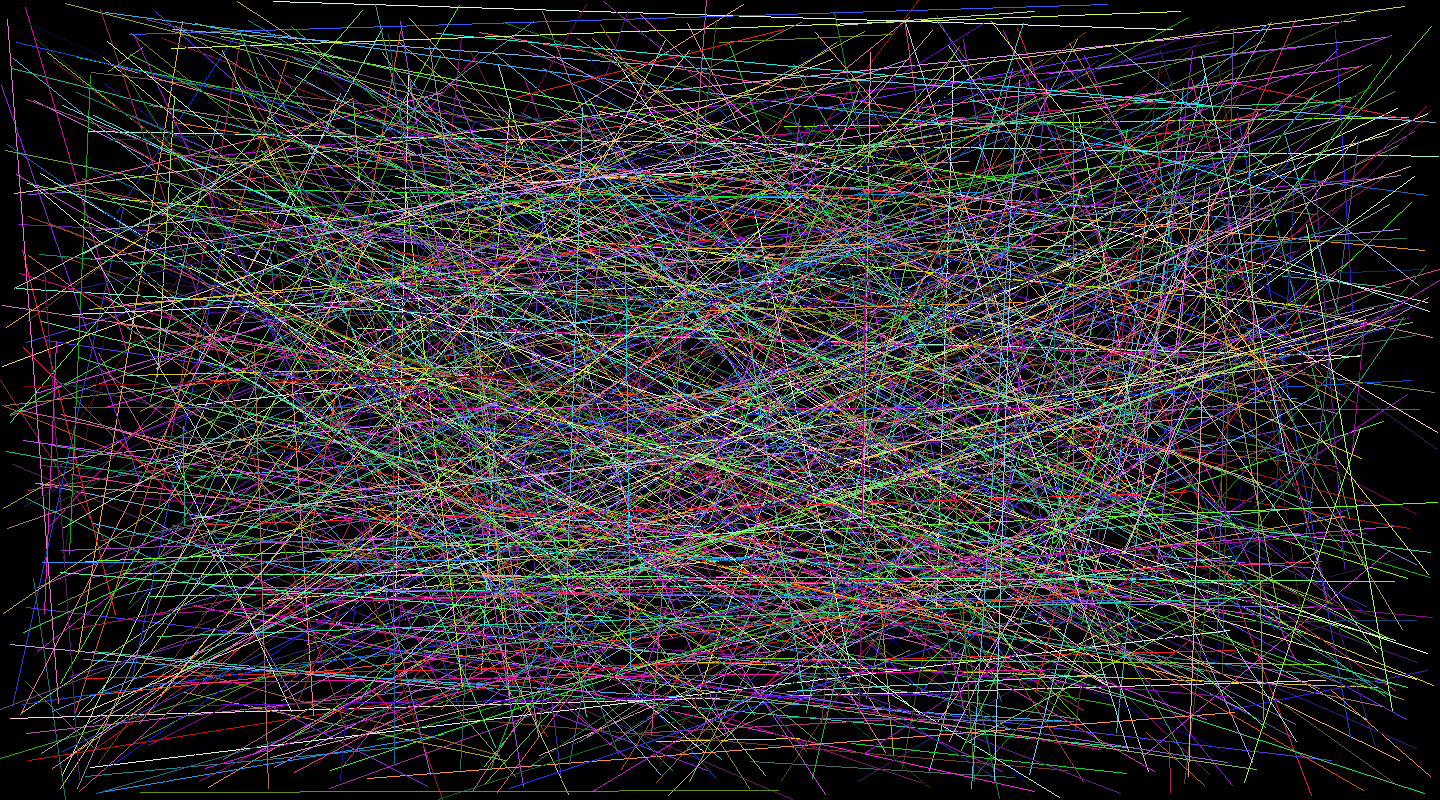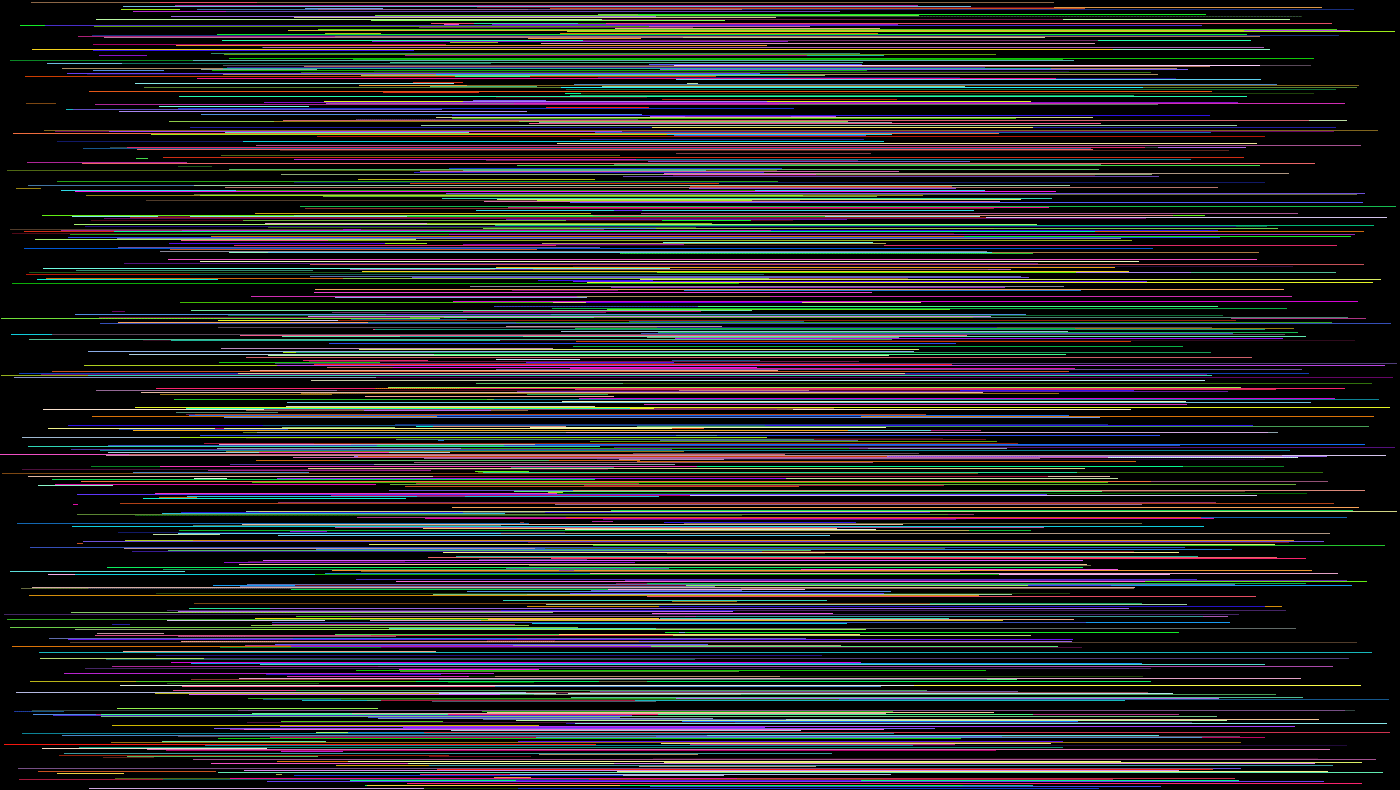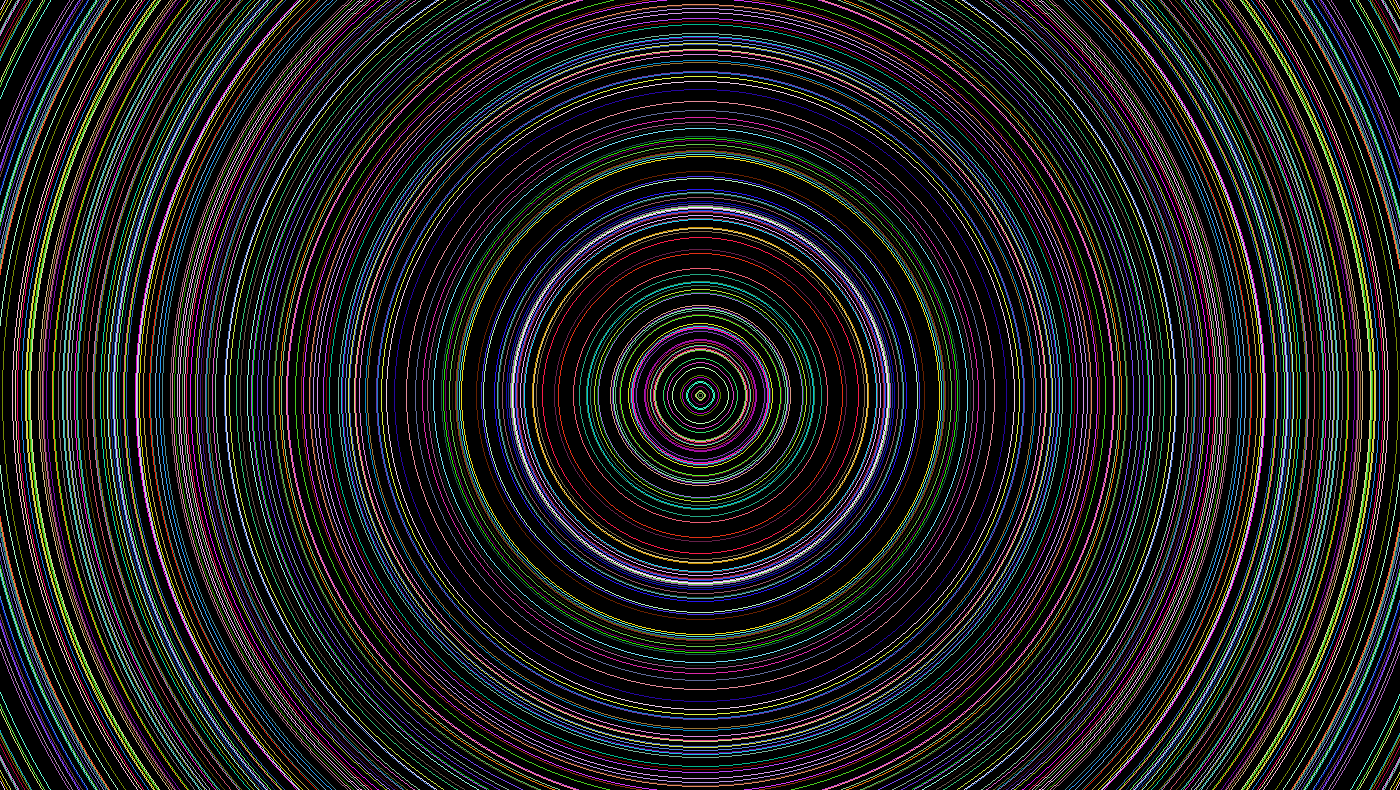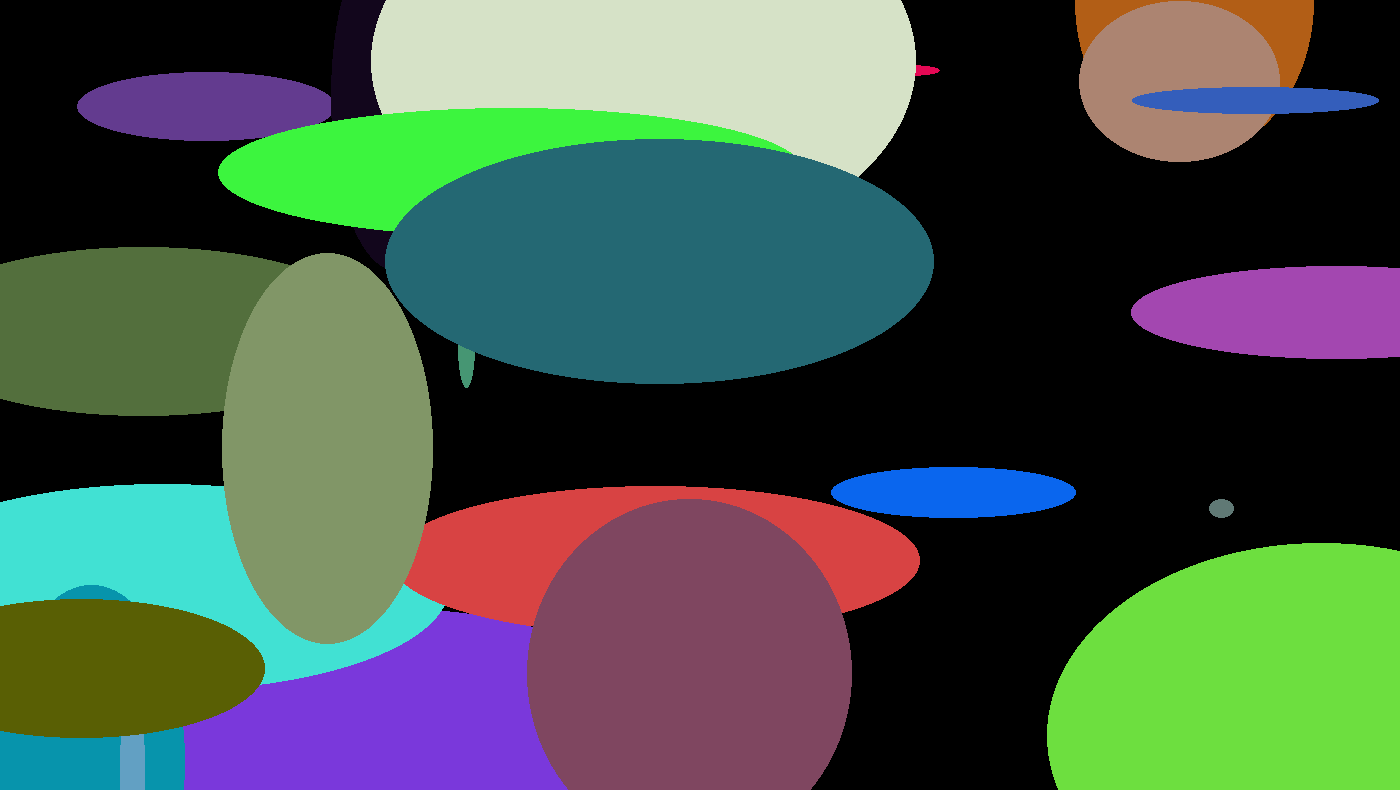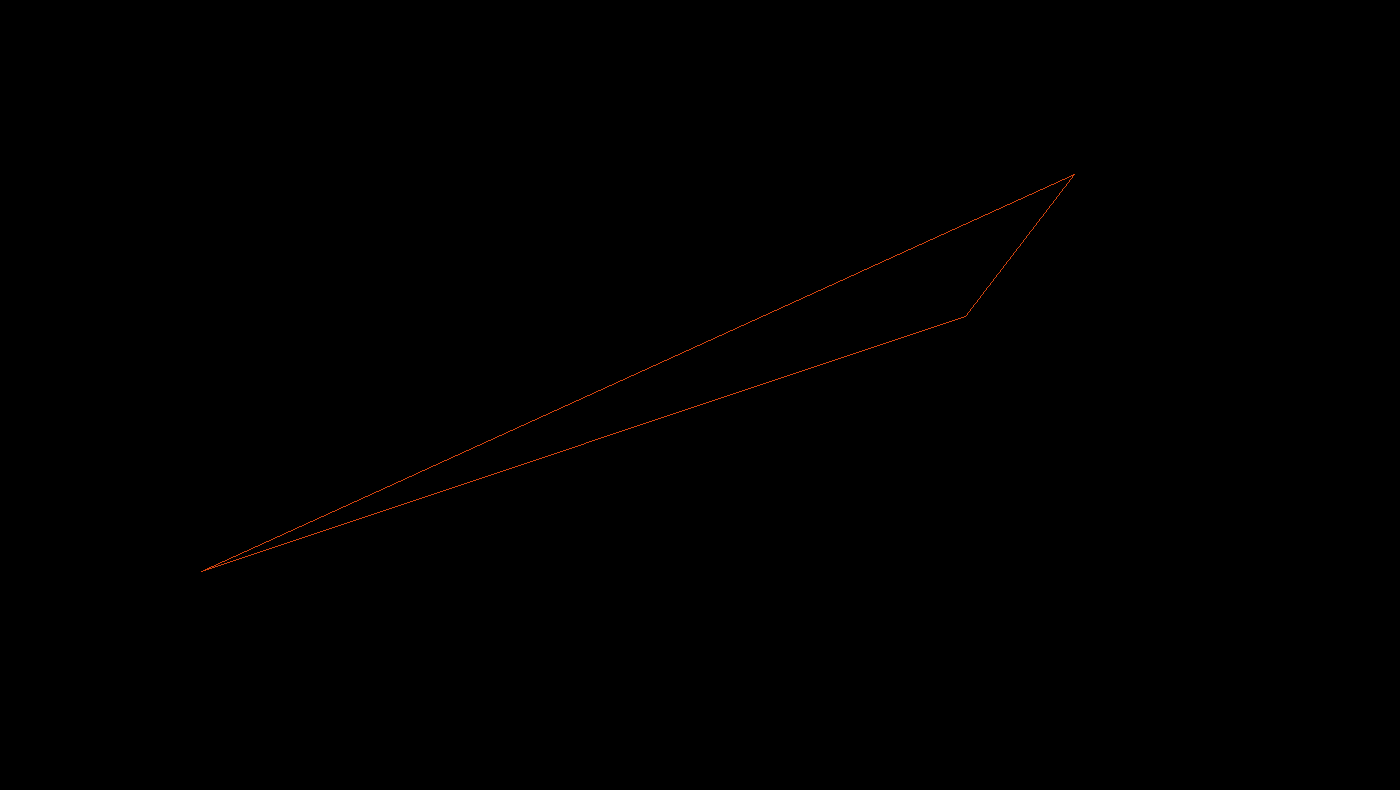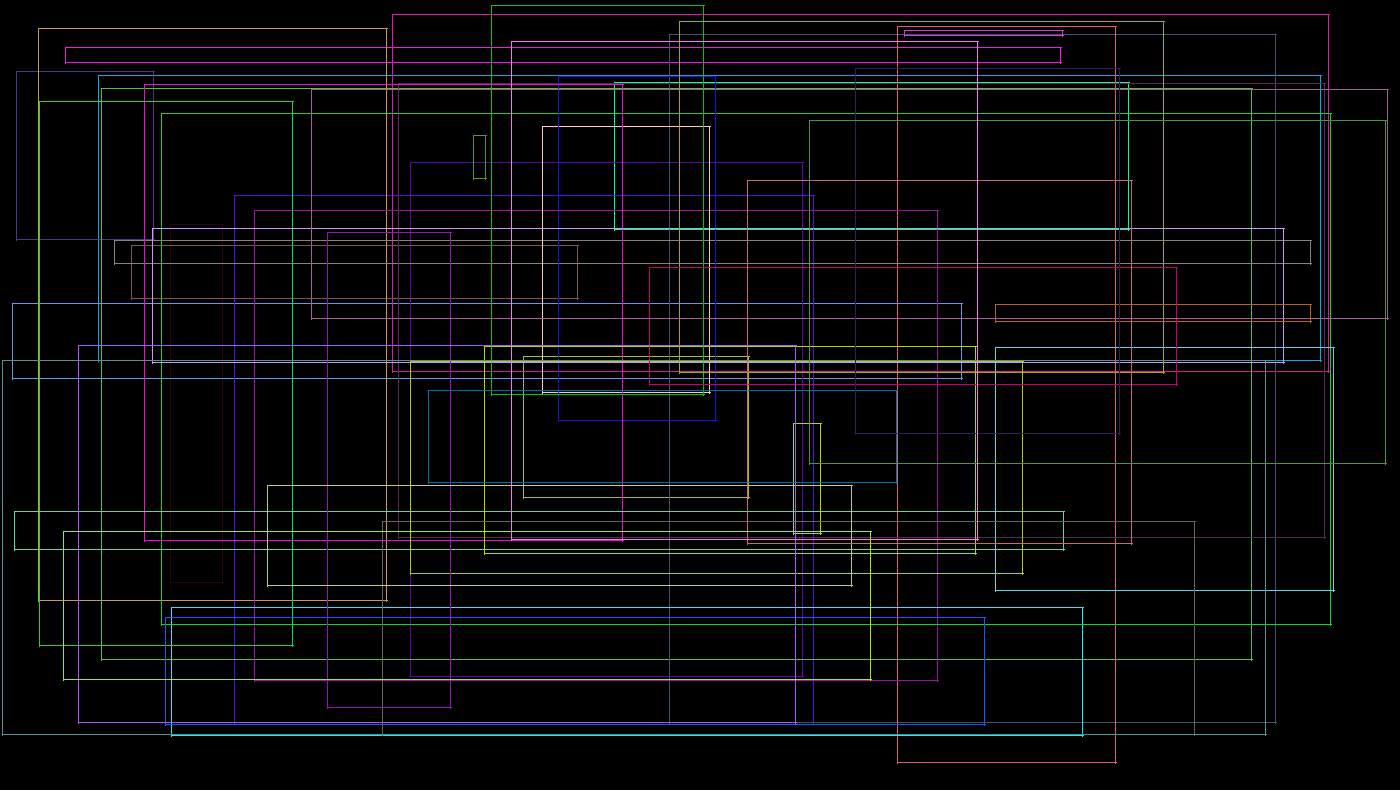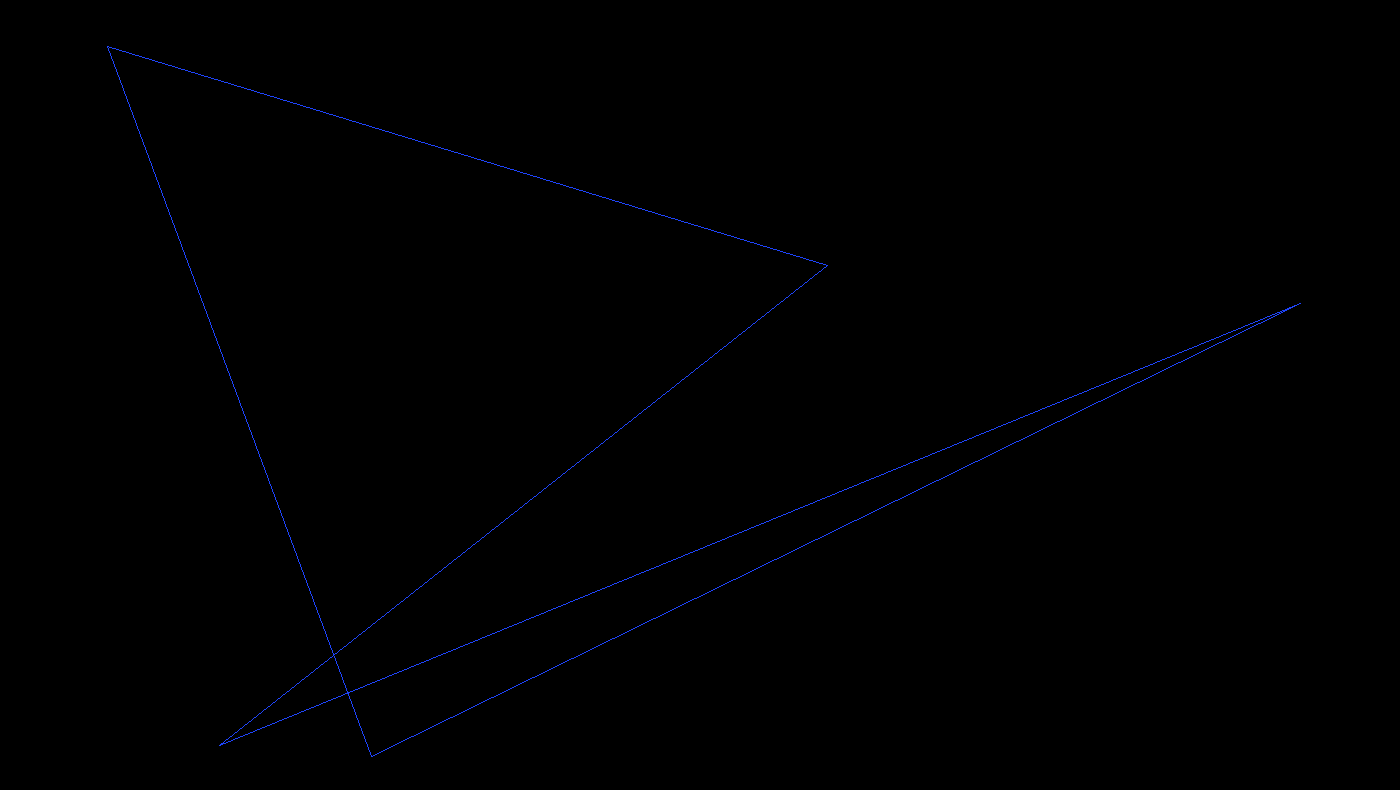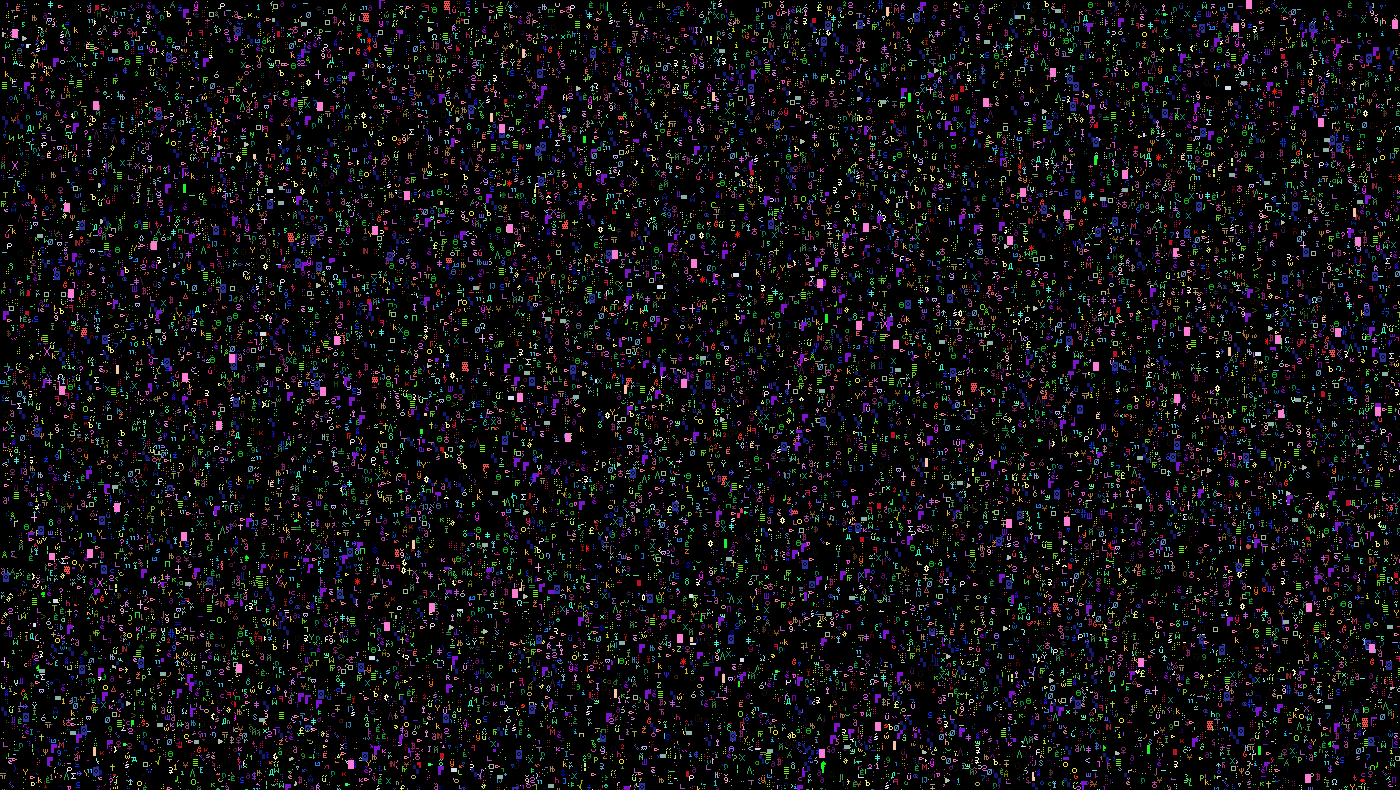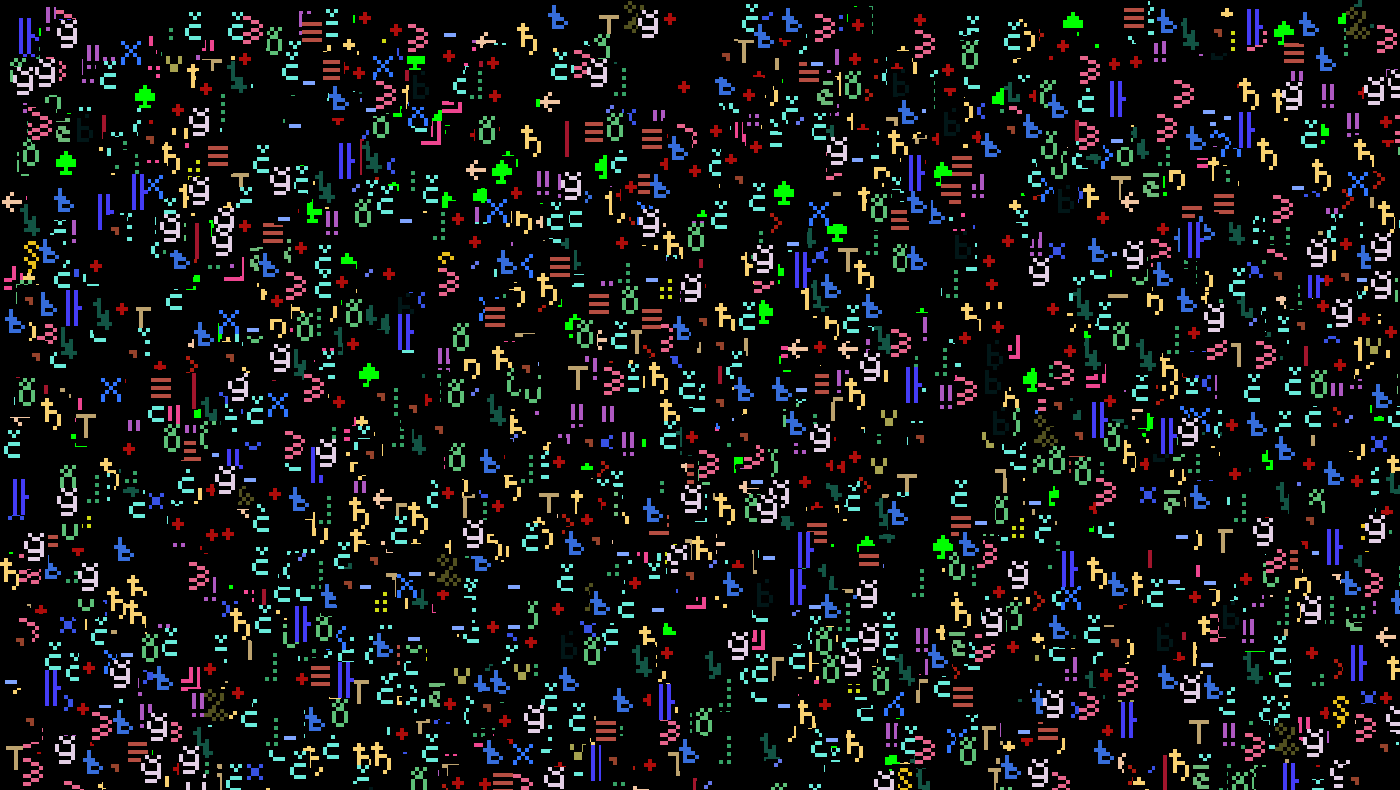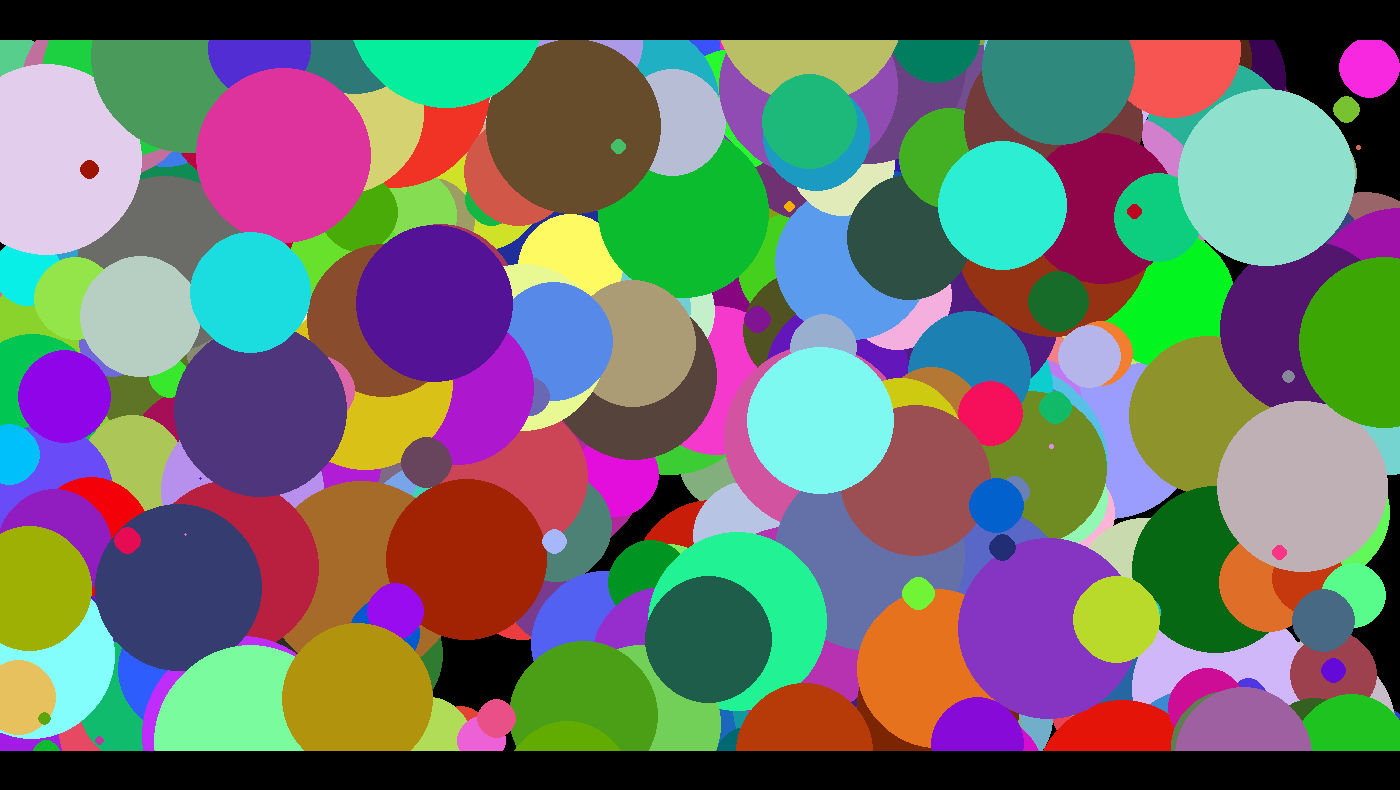HAGL is a lightweight hardware agnostics graphics library. It supports basic geometric primitives, bitmaps, blitting, fixed width fonts. Library tries to stay lightweight but targets reasonably powerful microchips such as ESP32. There is no dynamic allocation.
This can still be considered work in progress. API should be 90% stable.
To use HAGL you must provide a backend. The backend must provide atleast a function for putting a pixel. If nothing else is provided all higher level graphical functions will use this function to draw the primitives. While proper documentation is lacking see the example backend implementations for GD, SDL2, ESP-IDF (Ilitek, Sitronix, Galaxycore), ESP-IDF (Solomon), Nuclei RISC-V SDK, Raspberry Pi Pico SDK and Raspberry Pi Pico VGA board.
High level functions are pretty self explanatory. For example applications see Pico Effects, ESP Effects, SDL2 Effects, ESP GFX, and GD32V Effects.
Before you start drawing you should call hagl_init(). Some HAL configurations require you to call hagl_flush() to update the contents of the screen. Before exiting your program it is good idea to call hagl_close()to clean things up.
#include <hagl_hal.h>
#include <hagl.h>
hagl_backend_t *display = hagl_init();
/* Main loop. */
while (1) {
hagl_clear(display);
hagl_load_image(display, 0, 0, "/sdcard/hello.jpg");
hagl_flush(display);
};
hagl_close(display);HAL defines what kind of pixel format is used. Most common is RGB565 which is represented by two bytes. If you are sure you will be using only RGB565 colors you could use the following shortcut to create a random color.
hagl_color_t color = rand() % 0xffff;To write portable code which can be run with different pixel formats use the following instead.
uint8_t r = rand() % 255;
uint8_t g = rand() % 255;
uint8_t b = rand() % 255;
hagl_color_t color = hagl_color(display, r, g, b);for (uint32_t i = 1; i < 100000; i++) {
int16_t x0 = rand() % display->width;
int16_t y0 = rand() % display->height;
hagl_color_t color = rand() % 0xffff;
hagl_put_pixel(display, x0, y0, color);
}int16_t x0 = rand() % display->width;
int16_t y0 = rand() % display->height;
hagl_color_t pixel = hagl_get_pixel(display, x0, y0);Note that if requesting coordinates outside the clip window color black is returned. This behaviour is unoptimal and might change in the future.
for (uint16_t i = 1; i < 1000; i++) {
int16_t x0 = rand() % display->width;
int16_t y0 = rand() % display->height;
int16_t x1 = rand() % display->width;
int16_t y1 = rand() % display->height;
hagl_color_t color = rand() % 0xffff;
hagl_draw_line(display, x0, y0, x1, y1, color);
}for (uint16_t i = 1; i < 1000; i++) {
int16_t x0 = rand() % (display->width / 2);
int16_t y0 = rand() % display->height;
int16_t x1 = rand() % (display->width / 2);
int16_t width = rand() % (display->width - x0);
hagl_color_t color = rand() % 0xffff;
/* First two are aliases. */
hagl_draw_hline(display, x0, y0, width, color);
hagl_draw_hline_xyw(display, x0, y0, width, color);
hagl_draw_hline_xyx(display, x0, y0, x1, color);
}for (uint16_t i = 1; i < 1000; i++) {
int16_t x0 = rand() % display->width;
int16_t y0 = rand() % (display->height / 2);
int16_t y1 = rand() % (display->height / 2);
int16_t height = rand() % (display->height - y0);
hagl_color_t color = rand() % 0xffff;
/* First two are aliases. */
hagl_draw_vline(display, x0, y0, height, color);
hagl_draw_vline_xyh(display, x0, y0, height, color);
hagl_draw_vline_xyy(display, x0, y0, y1, color);
}for (uint16_t i = 1; i < 500; i++) {
int16_t x0 = display->width / 2;
int16_t y0 = display->height / 2;
int16_t radius = rand() % display->width;
hagl_color_t color = rand() % 0xffff;
hagl_draw_circle(display, x0, y0, radius, color);
}for (uint16_t i = 1; i < 500; i++) {
int16_t x0 = rand() % display->width;
int16_t y0 = rand() % display->height;
int16_t radius = rand() % 100;
hagl_color_t color = rand() % 0xffff;
hagl_fill_circle(display, x0, y0, radius, color);
}for (uint16_t i = 1; i < 500; i++) {
int16_t x0 = display->width / 2;
int16_t y0 = display->height / 2;
int16_t rx = rand() % display->width;
int16_t ry = rand() % display->height;
hagl_color_t color = rand() % 0xffff;
hagl_draw_ellipse(display, x0, y0, rx, ry, color);
}for (uint16_t i = 1; i < 500; i++) {
int16_t x0 = rand() % display->width;
int16_t y0 = rand() % display->height;
int16_t rx = rand() % display->width / 4;
int16_t ry = rand() % display->height / 4;
hagl_color_t color = rand() % 0xffff;
hagl_fill_ellipse(display, x0, y0, rx, ry, color);
}int16_t x0 = rand() % display->width;
int16_t y0 = rand() % display->height;
int16_t x1 = rand() % display->width;
int16_t y1 = rand() % display->height;
int16_t x2 = rand() % display->width;
int16_t y2 = rand() % display->height;
hagl_color_t color = rand() % 0xffff;
hagl_draw_triangle(display, x0, y0, x1, y1, x2, y2, color);int16_t x0 = rand() % display->width;
int16_t y0 = rand() % display->height;
int16_t x1 = rand() % display->width;
int16_t y1 = rand() % display->height;
int16_t x2 = rand() % display->width;
int16_t y2 = rand() % display->height;
hagl_color_t color = rand() % 0xffff;
hagl_fill_triangle(display, x0, y0, x1, y1, x2, y2, color);for (uint16_t i = 1; i < 50; i++) {
int16_t x0 = rand() % display->width;
int16_t y0 = rand() % display->height;
int16_t x1 = rand() % display->width;
int16_t y1 = rand() % display->height;
int16_t w = rand() % display->width / 2;
int16_t h = rand() % display->height / 2;
hagl_color_t color = rand() % 0xffff;
/* First two are aliases. */
hagl_draw_rectangle(display, x0, y0, x1, y1, color);
hagl_draw_rectangle_xyxy(display, x0, y0, x1, y1, color);
hagl_draw_rectangle_xywh(display, x0, y0, w, h, color);
}for (uint16_t i = 1; i < 10; i++) {
int16_t x0 = rand() % display->width;
int16_t y0 = rand() % display->height;
int16_t x1 = rand() % display->width;
int16_t y1 = rand() % display->height;
int16_t w = rand() % display->width / 2;
int16_t h = rand() % display->height / 2;
hagl_color_t color = rand() % 0xffff;
/* First two are aliases. */
hagl_fill_rectangle(display, x0, y0, x1, y1, color);
hagl_fill_rectangle_xyxy(display, x0, y0, x1, y1, color);
hagl_fill_rectangle_xywh(display, x0, y0, w, h, color);
}for (uint16_t i = 1; i < 30; i++) {
int16_t x0 = rand() % display->width;
int16_t y0 = rand() % display->height;
int16_t x1 = rand() % display->width;
int16_t y1 = rand() % display->height;
int16_t w = rand() % display->width / 2;
int16_t h = rand() % display->height / 2;
int16_t r = 10
hagl_color_t color = rand() % 0xffff;
/* First two are aliases. */
hagl_draw_rounded_rectangle(display, x0, y0, x1, y1, r, color);
hagl_draw_rounded_rectangle_xyxy(display, x0, y0, x1, y1, r, color);
hagl_draw_rounded_rectangle_xywh(display, x0, y0, w, h, r, color);
}for (uint16_t i = 1; i < 30; i++) {
int16_t x0 = rand() % display->width;
int16_t y0 = rand() % display->height;
int16_t x1 = rand() % display->width;
int16_t y1 = rand() % display->height;
int16_t w = rand() % display->width / 2;
int16_t h = rand() % display->height / 2;
int16_t r = 10
hagl_color_t color = rand() % 0xffff;
/* First two are aliases. */
hagl_fill_rounded_rectangle(display, x0, y0, x1, y1, r, color);
hagl_fill_rounded_rectangle_xyxy(display, x0, y0, x1, y1, r, color);
hagl_fill_rounded_rectangle_xyxy(display, x0, y0, w, h, r, color);
}You can draw polygons with unlimited number of vertices which are passed as an array. Pass the number of vertices as the first argument.
int16_t x0 = rand() % display->width;
int16_t y0 = rand() % display->height;
int16_t x1 = rand() % display->width;
int16_t y1 = rand() % display->height;
int16_t x2 = rand() % display->width;
int16_t y2 = rand() % display->height;
int16_t x3 = rand() % display->width;
int16_t y3 = rand() % display->height;
int16_t x4 = rand() % display->width;
int16_t y4 = rand() % display->height;
hagl_color_t color = rand() % 0xffff;
int16_t vertices[10] = {x0, y0, x1, y1, x2, y2, x3, y3, x4, y4};
hagl_draw_polygon(display, 5, vertices, color);You can draw filled polygons with up to 64 vertices which are passed as an array. First argument is the number of vertices. Polygon does not have to be concave.
int16_t x0 = rand() % display->width;
int16_t y0 = rand() % display->height;
int16_t x1 = rand() % display->width;
int16_t y1 = rand() % display->height;
int16_t x2 = rand() % display->width;
int16_t y2 = rand() % display->height;
int16_t x3 = rand() % display->width;
int16_t y3 = rand() % display->height;
int16_t x4 = rand() % display->width;
int16_t y4 = rand() % display->height;
hagl_color_t color = rand() % 0xffff;
int16_t vertices[10] = {x0, y0, x1, y1, x2, y2, x3, y3, x4, y4};
hagl_fill_polygon(display, 5, vertices, color);The library supports Unicode fonts in fontx format. It only includes three fonts by default. You can find more at tuupola/embedded-fonts and CHiPs44/fontx2-fonts repositories.
for (uint16_t i = 1; i < 10000; i++) {
int16_t x0 = rand() % display->width;
int16_t y0 = rand() % display->height;
hagl_color_t color = rand() % 0xffff;
char code = rand() % 255;
hagl_put_char(display, code, x0, y0, color, font8x8);
}The library supports Unicode fonts in fontx format. It only includes three fonts by default. You can find more at tuupola/embedded-fonts repository.
for (uint16_t i = 1; i < 10000; i++) {
int16_t x0 = rand() % display->width;
int16_t y0 = rand() % display->height;
hagl_color_t color = rand() % 0xffff;
hagl_put_text(display, u"YO! MTV raps.", x0, y0, color, font6x9);
}Blit copies a bitmap to the screen. This example uses a glyph bitmap which is extracted from a font.
hagl_bitmap_t bitmap;
bitmap.buffer = (uint8_t *) malloc(6 * 9 * sizeof(hagl_color_t));
for (uint16_t i = 1; i < 20000; i++) {
int16_t x0 = rand() % display->width;
int16_t y0 = rand() % display->height;
hagl_color_t color = rand() % 0xffff;
uint16_t code = rand() % 0xffff;
hagl_get_glyph(display, code, color, &bitmap, font6x9);
/* These two are aliases. */
hagl_blit(display, x0, y0, &bitmap);
hagl_blit_xy(display, x0, y0, &bitmap);
}Scale blit copies and scales a bitmap to the surface. This example uses a glyph bitmap which is extracted from a font.
hagl_bitmap_t bitmap;
bitmap.buffer = (uint8_t *) malloc(6 * 9 * sizeof(hagl_color_t));
for (uint16_t i = 1; i < 20000; i++) {
int16_t x0 = rand() % display->width;
int16_t y0 = rand() % display->height;
hagl_color_t color = rand() % 0xffff;
uint16_t code = rand() % 0xffff;
hagl_get_glyph(display, code, color, &bitmap, font6x9);
/* These two examples do the same thing. */
hagl_blit_xywh(display, x0, y0, 24, 36, &bitmap);
hagl_blit_xyxy(display, x0, y0, x0 + 23, y0 + 35, &bitmap);
}You can restrict the area of drawing by setting a clip window.
hagl_set_clip(display, 0, 40, display->width, display->height - 40);
for (uint16_t i = 1; i < 500; i++) {
int16_t x0 = rand() % display->width;
int16_t y0 = rand() % display->height;
int16_t radius = rand() % 100;
hagl_color_t color = rand() % 0xffff;
hagl_fill_circle(display, x0, y0, radius, color);
}The MIT License (MIT). Please see License File for more information.


